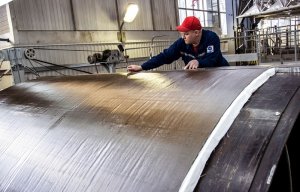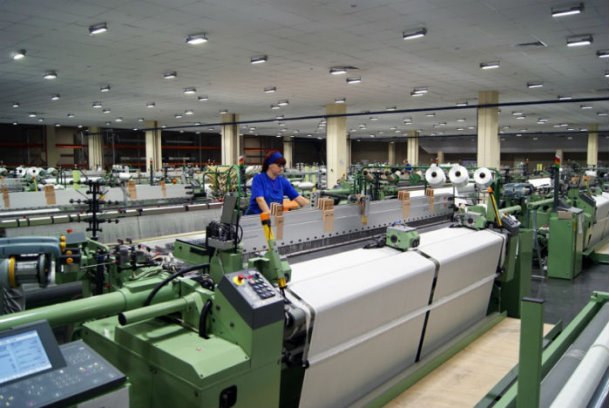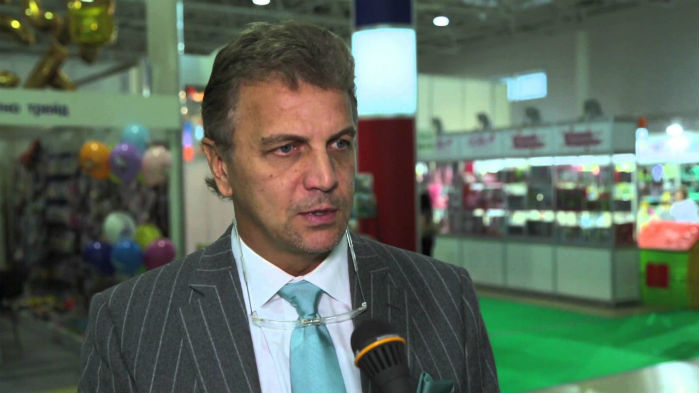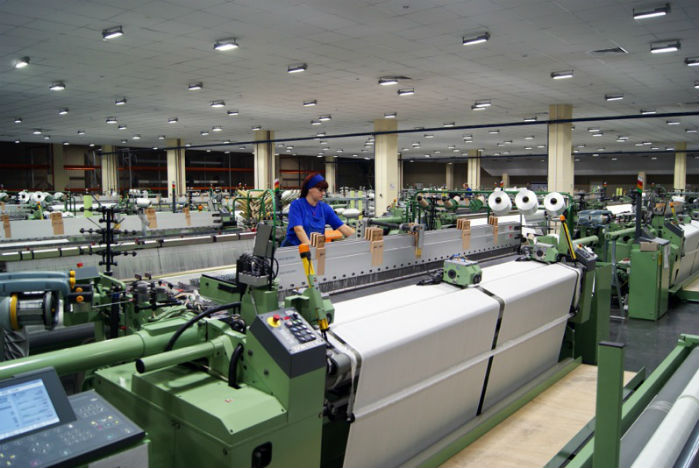
Russia poised for rapid growth
During the period January-October this year, the volume of production of technical textiles and nonwovens in Russia has declined by about 15%, compared to the same period last year.

11th December 2014
Innovation in Textiles
|
Moscow
Eugene Gerden reports from Moscow
The Russian nonwovens and technical textiles industries are on the verge of crisis, due to the ongoing decline of the Russian economy, caused by Western sanctions and the devaluation of the national currency, the ruble.
According to analysts at the Russian Ministry of Industry and Trade, amid the ongoing economic instability in Russia, the demand for technical textiles and nonwovens in the domestic market has significantly declined, with the biggest rates of decline being observed in the middle and high price segments.

Analysts believe that this is mainly due to currency jumps; the ever growing volume of illegal re-exports of technical textiles and nonwovens to Russia through the other countries of the Customs Union, and in particular Kazakhstan and Belarus; volatile commodity prices and the high level of depreciation of equipment at the majority of the industry’s enterprises.
During the period January-October this year, the volume of production of technical textiles and nonwovens in Russia has declined by about 15%, compared to the same period last year, and according to analysts’ predictions, the decline will continue until the end of the current year. At the same time the share of counterfeit and illegal imports and re-exports in the total structure of the market reached 30-35%.
The current situation in the market is aggravated by the ever-growing prices for finished products.
Andrew Razbrodin, president of the Russian Union of Entrepreneurs of Textile and Light Industry, the association, which unites the Russian leading producers of textiles and technical textile products said that in the case of technical textiles, the increase in prices for raw materials, and in particular for synthetic fibres and yarns, has resulted in a significant increase in prices for finished products and there is a possibility that prices will continue to grow during the next few months.
Raw materials situation
In the case of raw materials, despite the fact that Russia currently is not experiencing a shortage of polypropylene, which local production has significantly increased in recent years, (thanks to the establishment of new production facilities by some leading local petrochemical producers, and in particular Sibur), the situation with other raw materials, and in particular polyester remains more complex.
At present Russia does not have local facilities for the production of polyester, the majority of which, so far, has been imported from abroad, and in particular from Belarus, there is a possibility that, due to the current trade conflict with Belarus, future imports may significantly decline.
Still, despite the problems, some local analysts remain optimistic, also due to the forthcoming commissioning of the Ivanovo plant for the production of technical textiles and other similar production facilities.

Vasily Gushchin, deputy president of the Russian Union of Entrepreneurs of Textile and Light Industry, comments:
“The industry will continue to be competitive if the state continues its support. At present the majority of the industry’s enterprises do not have an access to capital, which can ensure their further development. In contrast to many EU and Asian states, which governments often subsidize building of large facilities for the production of technical textile and nonwovens (similar to those that will be commissioned in the Ivanovo region in 2016) the volume of industry’s support in Russia by the local state, so far, has been small. However there is a possibility that much can change already in the near future, as the government has started to pay more attention to the development of the industry in recent years. This will allow to create more jobs and to provide an impetus for further development of the industry.”
Tightening in lending policy
At the same time, according to press-service of the Russian Ministry of Industry and Trade, the situation is aggravated by the reluctance of national banks to provide loans to domestic producers of nonwovens and technical textiles.
At the same time those banks, which continue lending to the industry (the majority of which are affiliated with the state, and in particular VTB, VEB and Sberbank) have significantly tightened their credit policy and raise interest rates on loans. For example, the majority of Russian banks currently provide loans for the period of 3-5 years, which, according to producers, is insufficient for the implementation of serious investment projects.
Outlook
Analysts believe that the current decline in demand for technical textiles in Russia is temporary, which is caused by the rapid devaluation of national currency, the ruble, while the situation in 2015 will stabilize, as the Russian market has big potential for further growth.
This is reflected by official statistics. According to data from the Russian Union of Entrepreneurs of Textile and Light Industry (RUETLI), in 2012 imports of polyester fabrics to Russia amounted to more than 1.5 billion square metres.
According to calculations of analysts of RUETLI, in order to fully meet the local needs in technical fabrics, the volume of investments in the establishment of new production facilities is estimated at about 2 billion Euro.
It is planned that particular attention should be paid to the establishment of production of heavy industrial fabrics, such as new generation filter cloth, the demand for which in the Russian market in recent years has significantly increased.
Rising costs
According to analysts, another reason of the ever deteriorating situation in the industry is the ever growing production costs, and in particular for energy and labour. At the same time in recent years, despite all the state promises, taxes in the industry have also increased.
Meanwhile, according to Viktor Evtuhov, Russia’s Deputy Minister of Industry and Trade Minister, the Russian technical textiles and nonwovens industry has big potential for further growth.
Evtuhov said that the consumption of technical textiles in Russia by 2025 will increase by 2-3 times, so the main goal of Russian producers is to use this opportunity and meet the growing demand for modern technical fabrics and products.

Business intelligence for the fibre, textiles and apparel industries: technologies, innovations, markets, investments, trade policy, sourcing, strategy...
Find out more